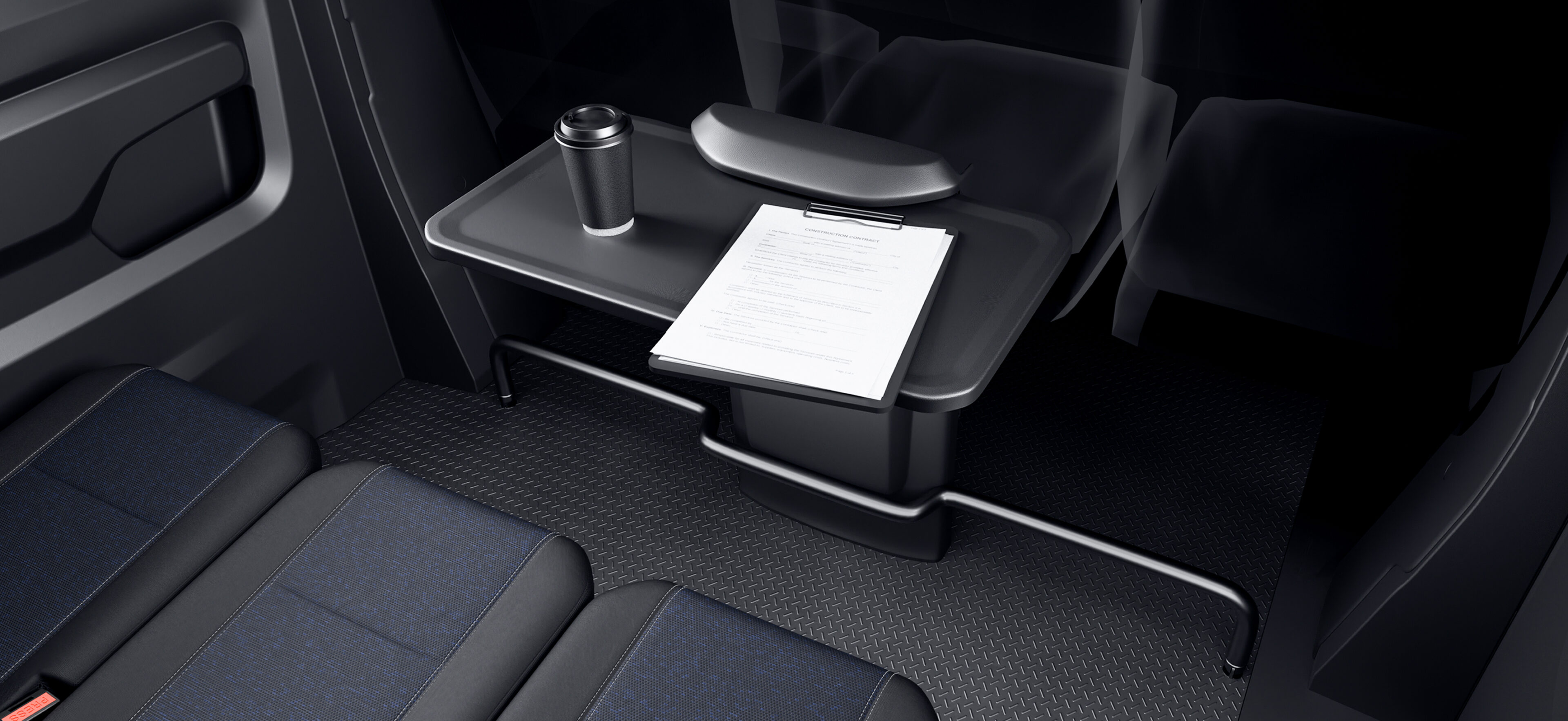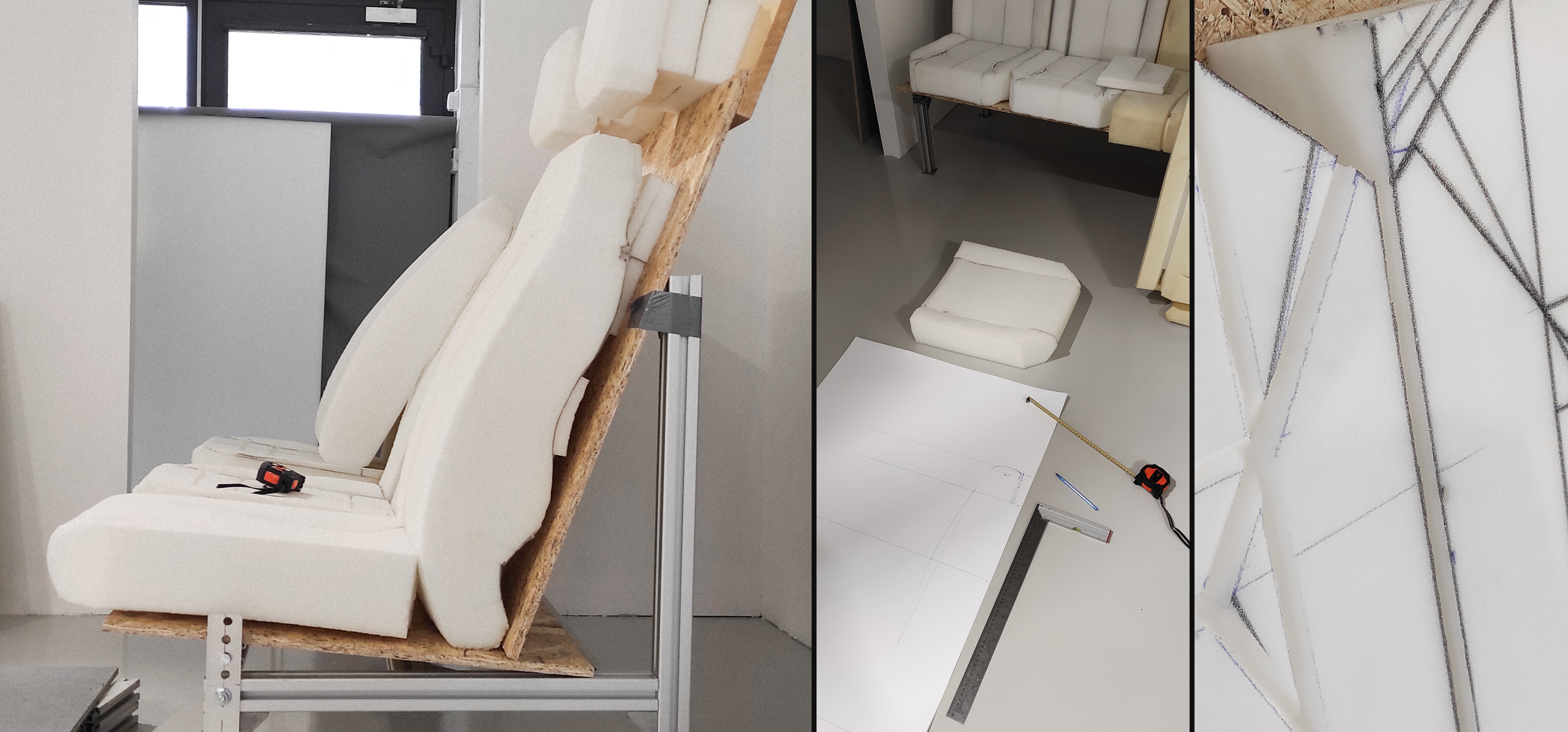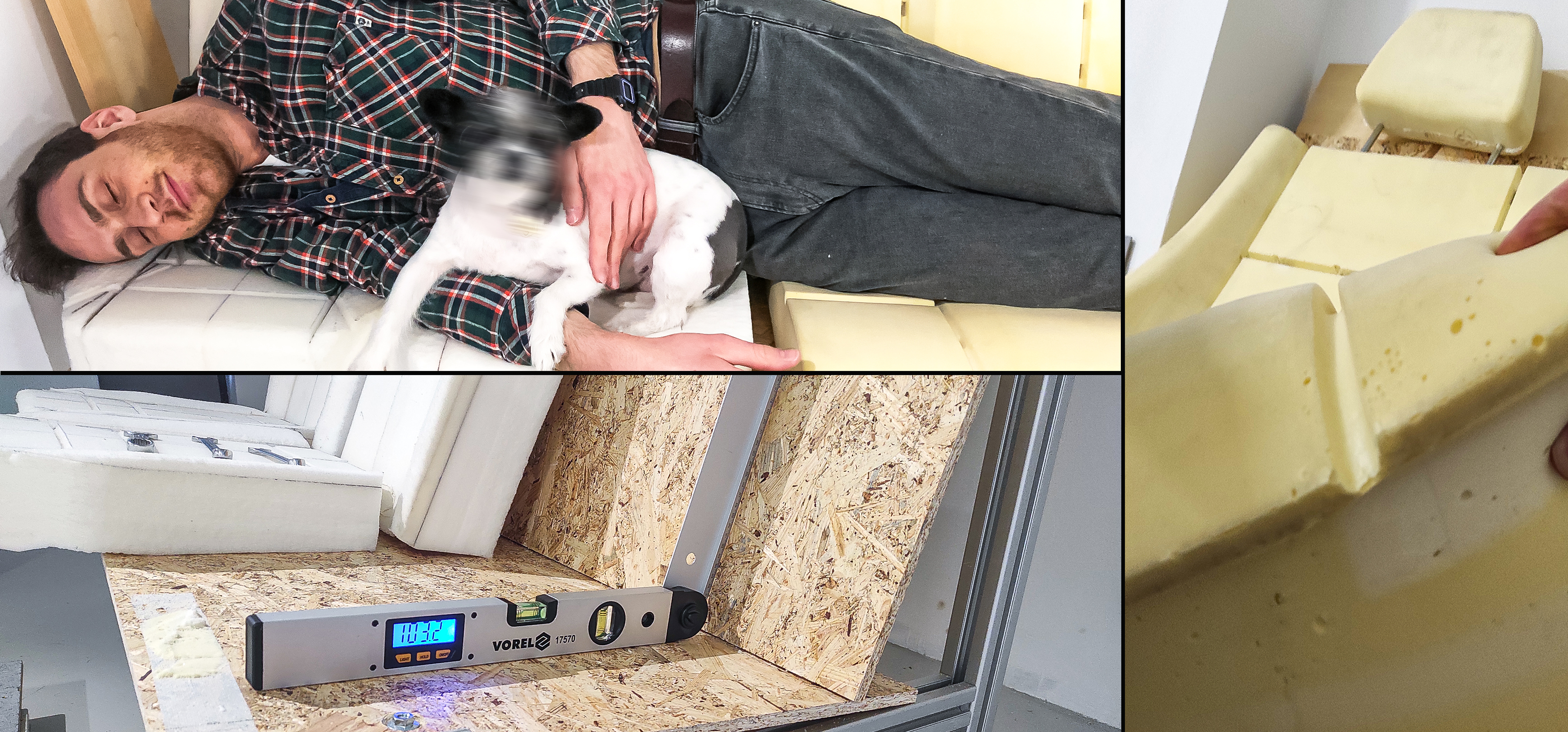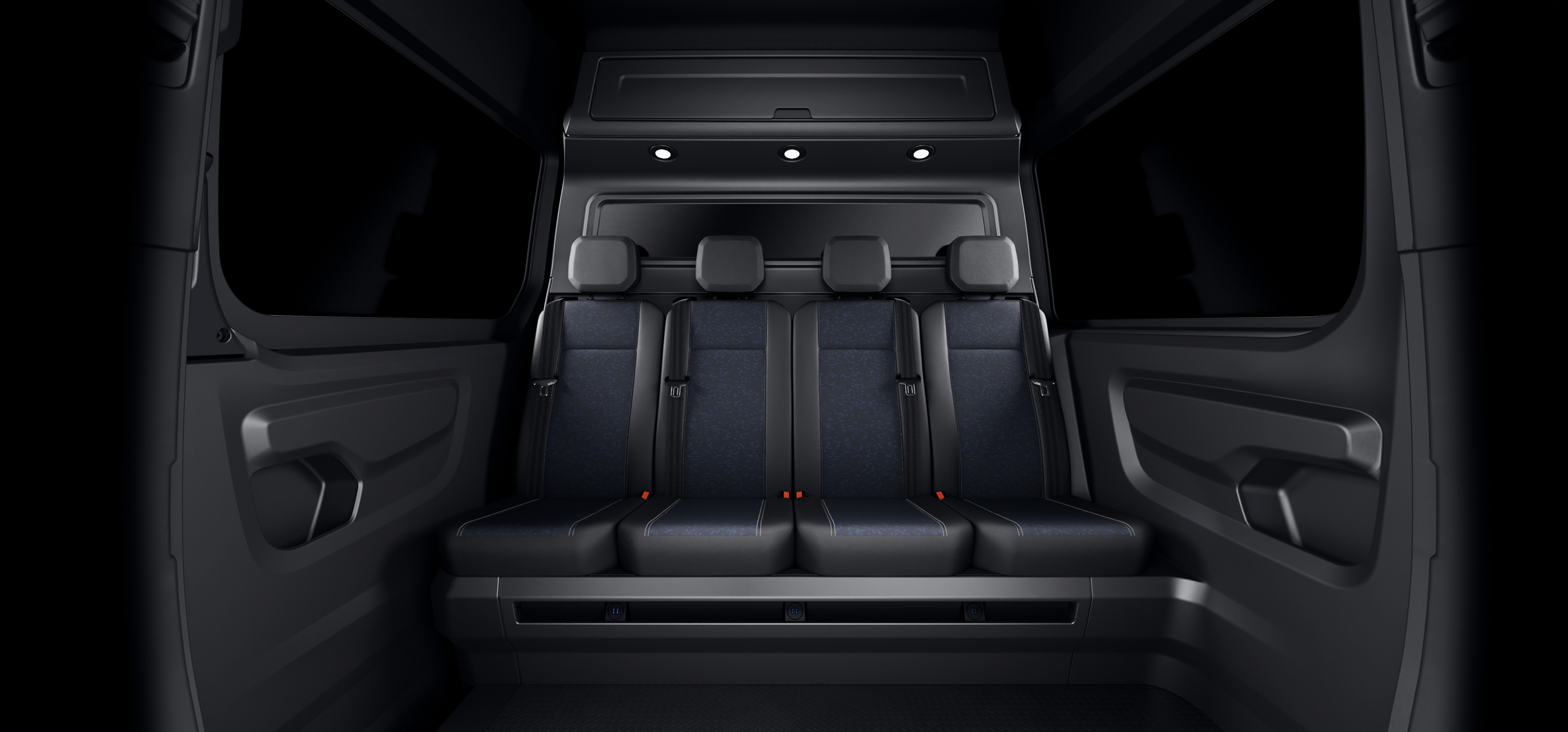Client: CARPOL sp. z o. o.
Year: 2022
Our challenge was to design a crew cab for industrial workers that could be adapted to fit the five most popular vans, accommodating various heights and lengths. The goal was to ensure it was not only comfortable and durable but also harmonious with the styling of the original vehicles.
The crew cab is designed to be modular, allowing for manufacturing cost savings and ease of transport and assembly. It can be fitted with either a three- or four-seat couch and has USB charging ports, LED lights, and all the necessary storage space
CLIENT’S FEEDBACK
I highly recommend Exeon
to anyone looking for an exceptional engineer, or designer! Open to suggestions and feedback, who takes pleasure in what they create. No need for many words, just look at the result!
[1.0] Concept ideation
Info
Analysis of functionalities played a major role in the first concept stages of our crew cab project, guiding the design towards an interior that combines practicality with comfort for its users. ... Read more We brainstormed ways to utilize the severely limited space to provide appropriate compartments for tools, personal items, bottles etc.
[2.0] Concept development
Info
In matching the crew cab's styling with the existing cabin aesthetics, we conceptualized many versions that both complement and enhance the van's interior. This approach ensures a cohesive look and feel throughout, creating a unified environment that is not only functional but also visually appealing.... Read more Sketches represent concepts for: Volkswagen Crafter, Fiat Ducato, Mercedes Sprinter, Ford Transit
[3.0] Physical mock-up
Info
In the process of hands-on prototyping, our team created seat foam mock-ups, shaping and testing various densities and contours. This direct approach allowed us to assess the ergonomics and make immediate adjustments, ensuring the final solution meets the needs of different users.
[4.0] Seating concepts
Info
Universal seat foam is designed to be adaptable, allowing for various upholstery designs that can be customized to match the specific model of the van.
[5.0] Testing Iterations
Info
One of the challenges in designing for this specific working conditions was to provide comfortable conditions for napping in an elongated position across individual seats. This is why the seat profiling is relatively flat. ... Read more We went beyond conventional testing methods and introduced a furry, four-legged tester to the mix. Our resident office dog took to the task with enthusiasm, offering a paw of approval to the most comfortable and durable options.
[5.1] Design Adjustments
Info
As a result of successive test iterations and analyses, areas requiring minor changes and adjustments to user needs and structural differences between vehicle models were identified. The implementation of an iterative approach in the design process once again confirmed its value.
[6.0] Supporting structure
The seat frame is engineered to withstand the rigors of daily use while maintaining its integrity over time.
Info
Through the implementation of universally adaptable frame assembly, integrated with the original construction of the van, we ensured both structural integrity and ease of installation. By leveraging minimal resources and simple components, we achieved the simultaneous opening of all seats, creating additional storage space for passengers' belongings.
[7.0] FEM simulations
Info
Simulations were conducted, so that the construction strictly adheres to the latest security measures and fully comply with homologation laws, ensuring that every aspect of our product meets industry standards for safety and quality.
[8.0] Detailed design
Info
Refined styling options were modelled in 3D polygonal software, to match the original construction and to test how the sketches translate into something more tangible.
[9.0] CAD surface modelling
Info
Later we reconstructed the surfaces in CAD software (CATIA) with attention to detail. Additionally introducing mounting features as well as panels divisions and supporting elements. ... Read more All of the engineering work was developed with close cooperation with the CARPOL engineering team and was ready for production.
[10] Prototyping
Info
The prototype was constructed using thermoforming of ABS sheets, at CARPOL factory. This process was necessary to verify all design and engineering assumptions and evaluate mounting procedures.
[11] Promotional materials
Info
Rendering is instrumental in producing promotional materials. By creating photorealistic images and animations, we are able to immerse potential customers in a virtual representation of the product, allowing them to visualize its features and benefits as if it were already available.
DESIGN & Engineering TEAM


















